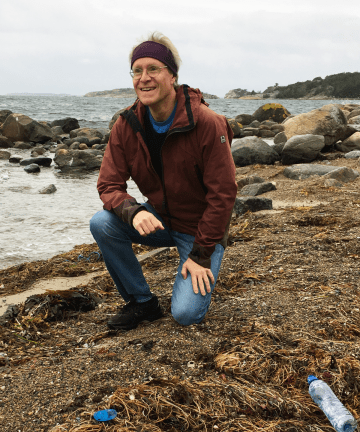The future of the Baltic Sea

Per Jonsson,
Professor,
Department of Marine Sciences,
Tjärnö Marine Laboratory,
University of Gothenburg,
Sweden,
Visiting Professor,
Environmental and Marine Biology,
The Sea,
Åbo Akademi University,
Finland
Business-as-usual scenarios of socio-economic development predict dramatic changes in critical conditions for life in the Baltic Sea. A far-reaching question is if the future sea will be able to deliver ecosystem services demanded by human society, e.g. seafood and recreation. Development of science-based management and the possibility for advanced governance brightens the bleak picture.
Considering the multiple pressures from its large human population, it is not surprising that the semi-enclosed Baltic Sea is one of the most impacted seas worldwide with habitat loss, eutrophication, pollution and over-fishing. The Baltic Sea is also one of the fastest warming regions caused by climate change with dramatic retreat of winter ice-cover, rise of surface water temperature, and reduction of salinity caused by higher rain- and snowfall.
So, can we predict what the future Baltic Sea could look like?
The young geologic age and the strong salinity gradient make the Baltic Sea relatively poor in species and with low genetic diversity. The low biodiversity forms an ecosystem that may be more sensitive and less resilient to environmental changes. In the face of ongoing and future changes, organisms in the Baltic Sea may either be tolerant and stay, they may adapt if the genetic diversity is sufficient, they may move to more suitable areas, or they may go extinct.
Dramatic changes expected
A warmer and fresher Baltic Sea may drive some cold-water marine species to extinction, e.g. cod, or force them to deeper waters with new and unexpected effects on bottom organisms. Higher temperatures may also lead to intense plankton blooms, in particular if nutrient levels go unabated, which may cause toxic or smelly water making the coast less attractive for recreation. More plankton production could further increase the already large areas of oxygen-depleted seafloor.
An increase of rainfall leading to lower salinity may dramatically reduce the living-space for many marine species forcing them to shift their distribution south- and westward. Present key species as bladder-wrack and blue mussels may then go locally extinct, e.g. in the Bothnian Sea and the Gulf of Finland, completely changing the ecosystem. With lower salinity, more freshwater species will colonise larger areas of the Baltic Sea, and higher temperatures may promote the introduction of more non-indigenous species.
A continued over-fishing together with high nutrient levels and climate change effects will lead to a generally lower and altered diversity of fish species, which may change the ecosystem at lower levels in the food chain. Human development also claims an ever-bigger share of the coastal environment, e.g. jetties and marinas leading to loss of shallow vegetation and important ecosystem services, e.g. improving water transparency.
Actions give positive results
Although many of the scenarios are uncertain, they all paint a more or less bleak picture of the future Baltic Sea. However, there are bright spots.
The Baltic Sea is one of the best studied marine ecosystems, which has facilitated advanced science-based management. The international and multilevel governance of the Baltic Sea environment is also unique, e.g. through HELCOM and EU, which has resulted in several powerful measures with successful results. Examples are the now falling levels of nutrients as a result of improved waste treatment and land use, and the return of top predators as seals and white-tailed eagle through control of toxic pollution.
Research models can help management
Ongoing research produce models which can be used to predict the outcome of management actions, and suggest where new marine reserves are best placed to protect areas that may serve as refuges with less climate-change effects. In a wider perspective, the already severe environmental impacts together with the development of advanced governance and effective management actions suggest that the Baltic Sea may be viewed as a ‘time machine’ for how to manage other coastal seas that are now facing similar challenges.
The Baltic Sea ecosystem may change dramatically during this century depending on our ability to curb climate change and to reduce the input of nutrients and pollutants. It is today unclear if a future ecosystem will continue to provide necessary ecosystem services like the cultural and recreational values that partly define the life around the Baltic Sea.
Expert article 2552
